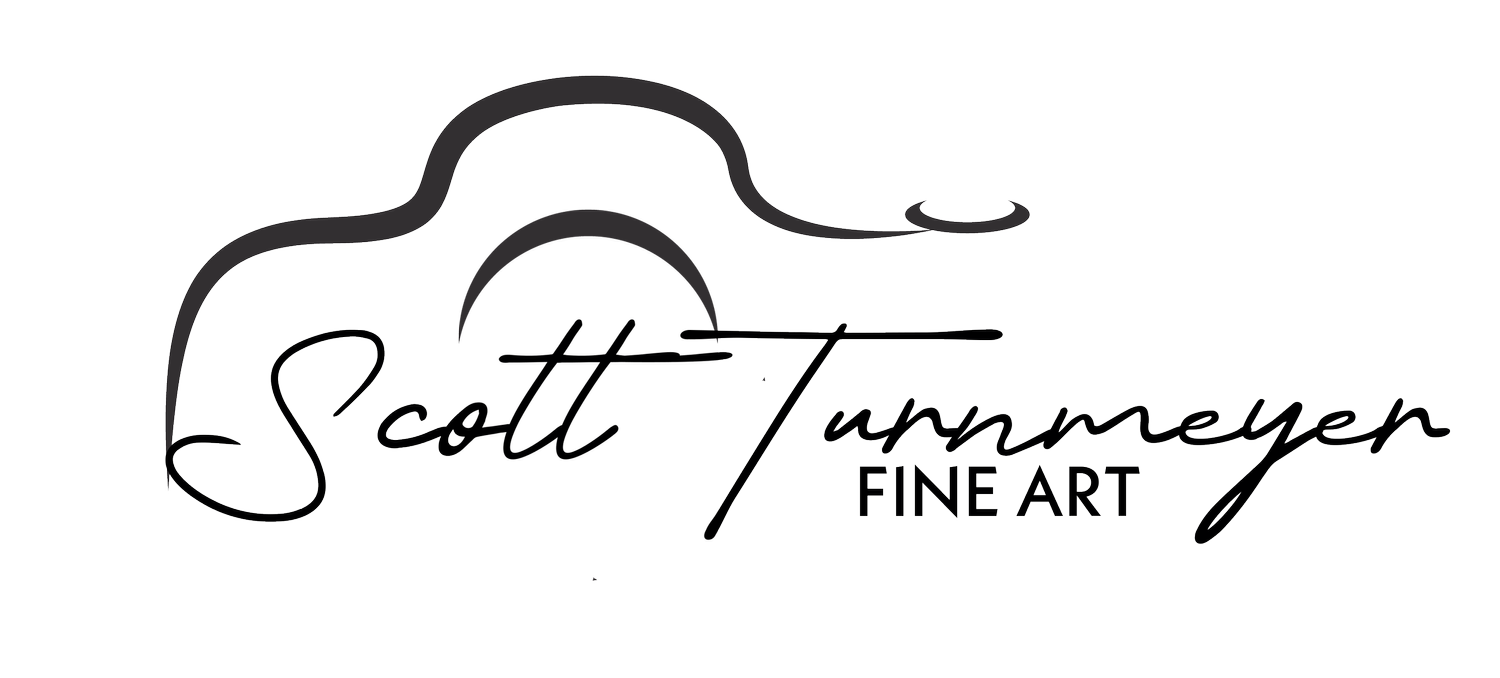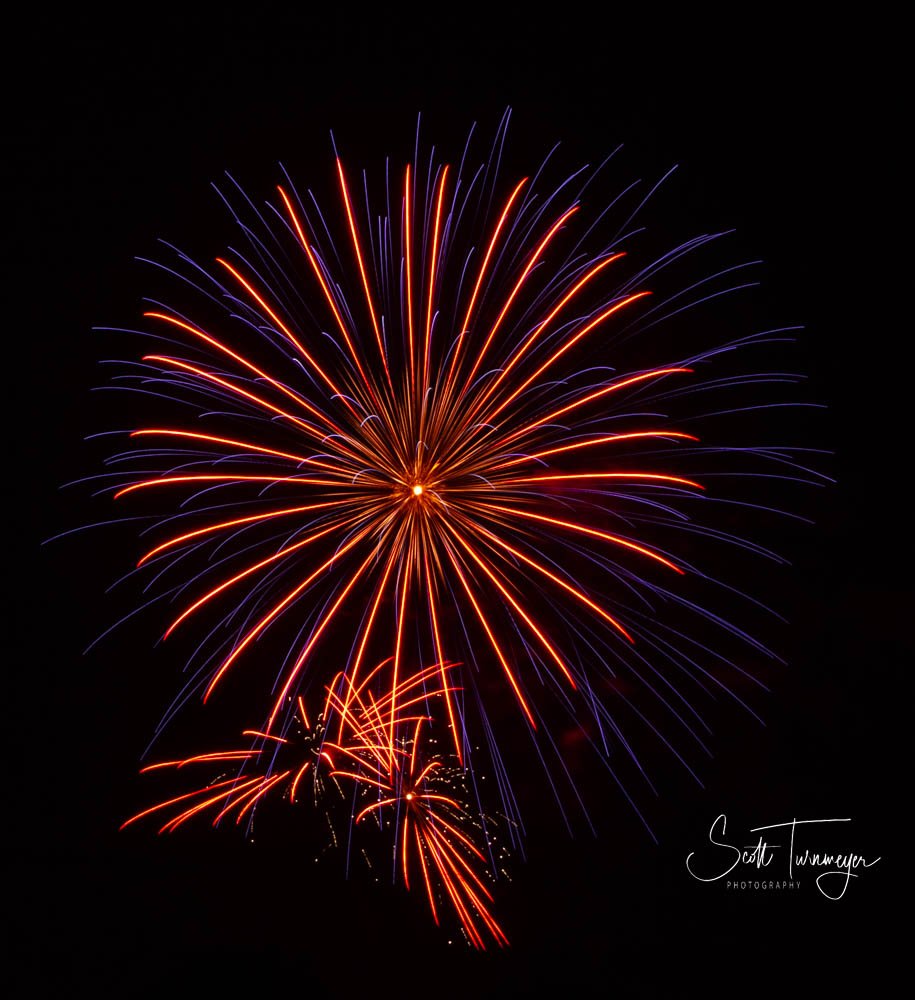Mastering Firework Photography with Your DSLR: A Comprehensive Guide
by Scott Turnmeyer
Fireworks displays offer an incredible opportunity for photographers to capture vibrant, dynamic images. With a DSLR camera, you have the tools to take stunning firework photos. Here’s a step-by-step guide to help you make the most of these spectacular events.
1. Preparation is Essential
Choose the Right Location
Scout your location ahead of time. Look for a spot with an unobstructed view of the sky where the fireworks will be. Including landmarks or reflections in water can add depth and interest to your photos.
Check the Weather
Clear skies are ideal for firework photography. If possible, check the weather forecast and choose a night with little to no cloud cover.
Bring the Right Gear
DSLR Camera: Any DSLR will do, but having one with manual mode is essential.
Lenses: A wide-angle lens is great for capturing the entire scene, while a zoom lens can help you focus on individual bursts.
Tripod: A sturdy tripod is crucial for keeping your camera steady during long exposures.
Remote Shutter Release: This helps prevent camera shake when taking photos.
by Scott Turnmeyer
2. Setting Up Your DSLR
Manual Mode
Set your camera to manual mode (M) to have full control over the settings.
ISO Settings
Keep the ISO low, around 100-200, to minimize noise and maintain image quality.
Aperture
An aperture of f/8 to f/16 works well for firework photography. This provides a good depth of field and keeps most of the burst in focus.
Shutter Speed
For capturing the trails and bursts of fireworks, a shutter speed of 1 to 4 seconds is ideal. Experiment with different durations to find what works best for the specific display.
Focus
Manually set your focus to infinity. If your lens has a hard stop at infinity, use it. If not, use live view to zoom in on a distant light source and adjust the focus accordingly.
by Scott Turnmeyer
3. Timing and Technique
Use a Tripod
Mount your camera on a tripod to ensure stability. Long exposures require the camera to be perfectly still to avoid blur.
Use a Remote Shutter or Timer
A remote shutter release or the camera’s built-in timer reduces camera shake when you press the shutter button.
Anticipate the Action
Watch the fireworks for a while to get a sense of their timing. Press the shutter just before you expect the burst to capture the entire explosion and its trails.
Multiple Exposures
Consider using the bulb mode on your DSLR. In bulb mode, the shutter stays open as long as you hold down the shutter release. This allows you to capture multiple bursts in a single frame. Be cautious not to overexpose the image.
by Scott Turnmeyer
4. Composition Tips
Frame Your Shots
Include foreground elements like buildings, trees, or a crowd to add context and scale to your photos. This can make your images more engaging.
Vary Your Shots
Mix wide-angle shots that capture the entire sky with close-ups of individual bursts. Experiment with different angles and perspectives.
Keep an Eye on the Horizon
Make sure your horizon line is straight to maintain a professional look in your photos. Use your camera’s built-in grid lines to help with this.
by Scott Turnmeyer
5. Post-Processing
Edit Your Photos
Use photo editing software like Adobe Lightroom or Photoshop to enhance your images. Adjust the exposure, contrast, and saturation to bring out the best in your fireworks photos.
Crop and Straighten
Crop your photos to eliminate distractions and focus on the most interesting parts of the image. Straighten the horizon if necessary.
Noise Reduction
Even with a low ISO, some noise might be present in your photos. Use noise reduction tools in your editing software to clean up your images.
Sharpening
Apply sharpening to bring out the details in the fireworks trails and bursts. Be careful not to overdo it, as this can introduce artifacts.
by Scott Turnmeyer
Conclusion
Taking great firework photos with your DSLR requires a bit of preparation and practice, but the results are well worth the effort. By following these tips and experimenting with your settings, you’ll be able to capture stunning images that showcase the beauty and excitement of fireworks displays. Happy shooting!
- Scott
Follow me!






